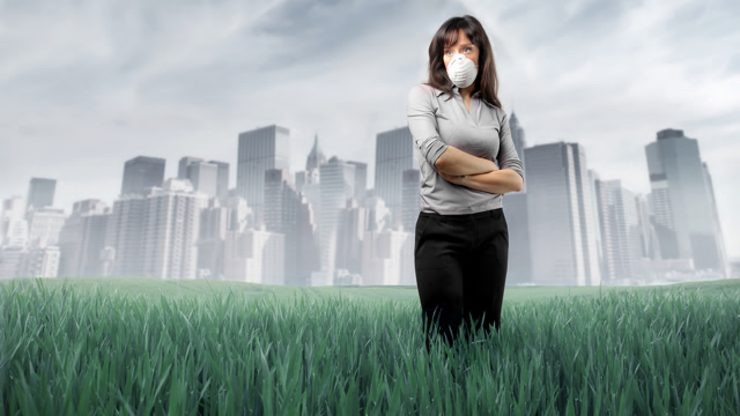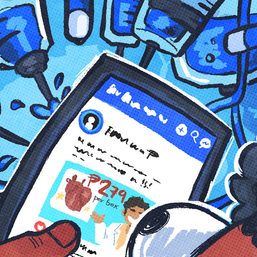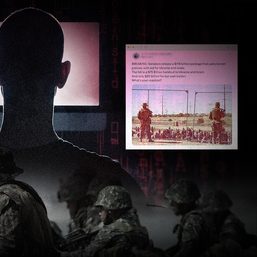SUMMARY
This is AI generated summarization, which may have errors. For context, always refer to the full article.

MANILA, Philippines – You’ll know by December if the Metro Manila city you live in has safe air.
By next month, all 18 cities and municipalities in Metro Manila will have their own real-time air quality monitoring station, said Environment Secretary Ramon Paje on Monday, November 17.
This is part of his department’s commitment to bring down air pollution to levels deemed safe by international groups like the World Health Organization (WHO).
“The President made this the number one key result area of the DENR (Department of Environment and Natural Resources). By the end of his term, we will make sure our air, especially in Metro Manila, will pass international standards,” said Paje.
Currently, there are only 3 more monitoring stations left to build in Metro Manila, the most urbanized area in the country as well as the most populated.
The 3 cities still without stations are Pasig, Mandaluyong and Parañaque, said DENR Environment Management Bureau (EMB) Director Jonas Leones.
By November 30, the stations in these cities should be built so that by December, the EMB will be able to publish hourly measurements of air quality.
The results will be posted on the EMB website and flashed in television monitors in the EMB office in Quezon City, Leones told Rappler.
The hourly results will be measurements of PM10 or particulate matter 10 microns and below in diameter.
Particulate matter is any type of solid particles in the air in the form of smoke, dust and vapors. One source of these particles is the burning of diesel fuel by vehicles.
PM10, specifically, are particles small enough to be breathed into the lungs causing respiratory disease and lung damage. (READ: Outdoor air pollution a leading cause of lung cancer – WHO)
‘Shame campaign’
The EMB also plans to report the results to the local government units of each city and town in order to pressure them to implement the Clean Air Act.
“We can say the air in Pasay is filthier than the air in Makati on this day. We can now compare them and therefore we can now tell them, ‘Mayor, kindly help us. Please help us lower the pollution in your city because it will now endanger your community,'” said Paje.
The monitoring stations will allow the public to compare the air quality in all of the cities.
This can serve as added pressure to the LGUs to fix their air pollution problem.
“The people will choose where to live, not only because of the quality of life, but because of the quality of the environment in a particular city. Do you want to live in a city where your kids get asthma?” said Paje.
Leones also dubbed the initiative a “shame campaign” that could even affect the investments going into the city or town.
“For example, if a potential investor finds out that in Pasay the air quality is bad, so the investor won’t go there,” he said.
Metro Manila reported air pollution levels of 136 micrograms per normal cubic meter (ug/Ncm) of Total Suspended Particulates (TSP) last June, still way above the World Health Organization standard of 90 ug/Ncm
This shows an upward trend in air pollution after it was reduced to 118 ug/Ncm in 2012. Paje said the worsening air quality may be due to increased number of vehicles in Metro Manila, intensified traffic jams and lax monitoring of smoke-belchers. (READ: End Metro Manila traffic, fund sustainable transport)
In terms of PM10, a more accurate measurement of health-affecting air pollution, WHO said the ideal annual PM10 levels is 20 ug/Ncm. The ideal daily PM10 levels is 50 ug/Ncm.
Some Metro Manila cities, including Quezon City and Valenzuela were able to achieve “good” PM10 air quality based on October 9 monitoring station results. That day, the two cities were able to achieve air pollution of 54 ug/Ncm or lower, according to EMB.
The city with the filthiest air may be Pasay, said Paje. At times, stations record air pollution levels of up to 200 ug/Ncm near the Taft MRT station in EDSA.
Corruption and clean air
Other big developments for the government’s air quality campaign are set to take place this November, which is also Clean Air Awareness Month.
On November 26, the EMB will meet with the Department of Transportation and Communication (DOTC) and Department of Trade and Industry (DTI) to strengthen their joint implementation of the Clean Air Act, said Leones.
The DOTC, through the Land Transportation Office (LTO) is the agency in charge of inspecting motor vehicles while the DTI is in charge of ensuring maintenance of the cars.
But corruption in the LTO allows many smoke-belching vehicles to still pass the registration process.
This happens when private emission testing centers (PETCs) pass manipulated photos of cars that go in for testing when in fact, the cars never showed up and only paid a bribe for the photos to go through.
Leones said they detected this after counting the number of vehicles that supposedly have their cars tested in each PETC. Given their resources and manpower, each PETC should only be able to test 80 vehicles a day. But based on the photos sent to LTO, some are able to test up to 600 a day.
The EMB will propose to the agencies a special software that will detect if the photos have been manipulated.
“If the software reports that two pictures are too similar, we can catch the PETC submitting those photos,” he said.
The software, called Image Comparison Engine, was suggested by the Coalition of Clean Air Advocates (CCAA) who say that proper vehicle maintenance is the solution to air pollution in Metro Manila.
“With the privilege of owning cars comes the responsibility of maintaining these cars so they won’t become smoke belches and cause deadly human diseases,” said CCAA Communications Vice President Mike Aragon.
Appeal of Coalition of Clean Air Advocates to the Aquino Administration:
The government needs to emphasize the importance of car maintenance rather than just passing emission tests, said Leones.
Aside from emission testing certificates, he said car owners must also be required to submit certificates of good maintenance from repair shops when they have their car registration renewed each year. – Rappler.com
Add a comment
How does this make you feel?





There are no comments yet. Add your comment to start the conversation.